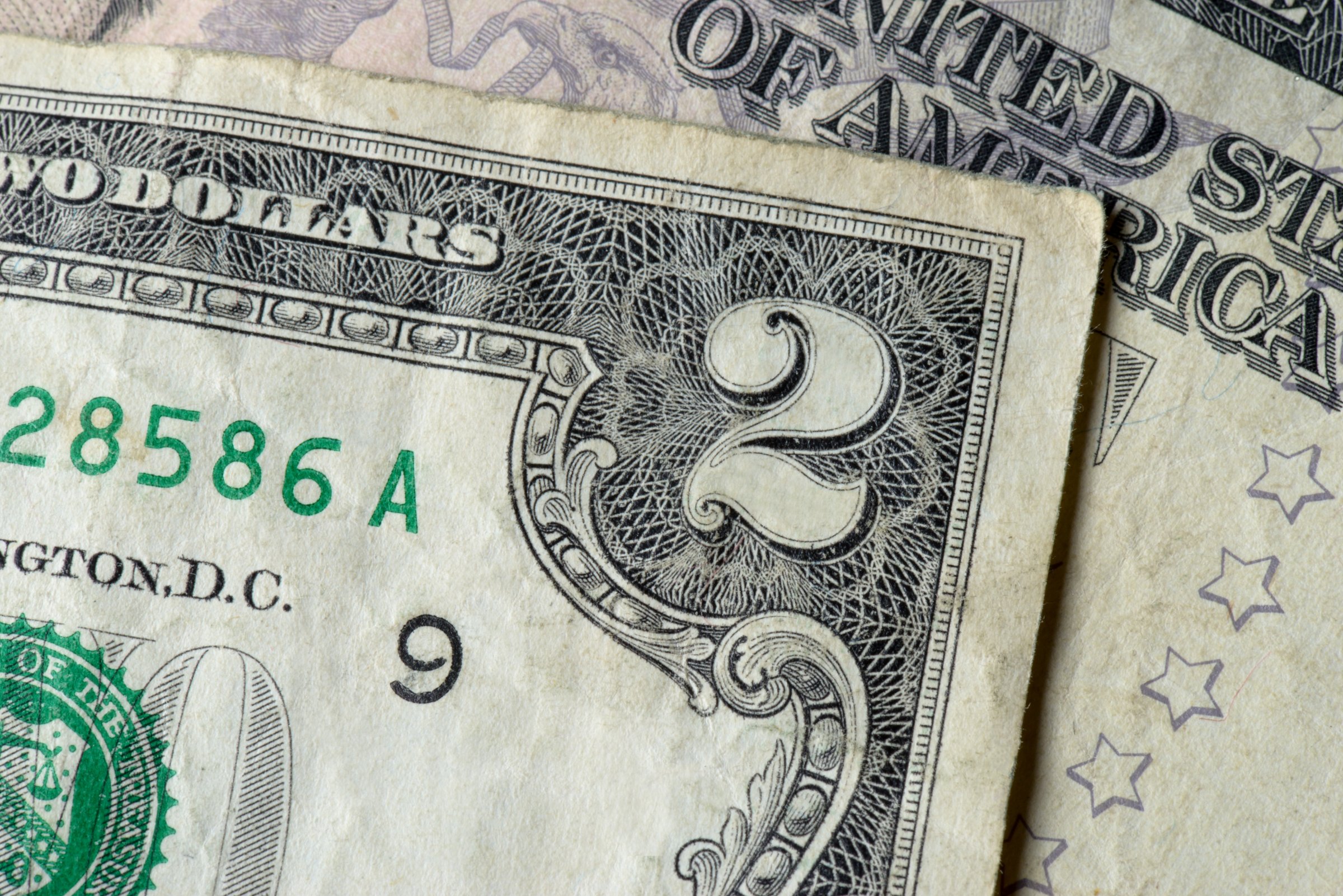
Now that Alexander Hamilton is safe on the sawbuck, and Andrew Jackson is banished to the back of the $20 note, could we please tackle a rather more urgent U.S. monetary issue?
Namely, junking the $2 bill.
Forget for the moment that Thomas Jefferson—whose portrait graces the twofer—has lately been knocked from his Founding Father’s pedestal by his archrival Hamilton. Never mind Jefferson was a slaveholder or the overwhelming evidence that he repeatedly impregnated Sally Hemings. There are more practical reasons for discarding his bill.
Put plainly, it is seldom used, much reviled, bothersome and just plain pointless.
We’ve previously relegated such irrelevant money as two- and three-cent pieces to oblivion. In the 21st century, the $2 bill is a paper appendix that should be similarly discarded.
Twofers constitute just 3% of all U.S. currency in circulation. No wonder the Treasury Department stopped printing them in 1966. Yes, many of us excitedly snapped them up a decade later when they were reintroduced to mark our Bicentennial.
But after the initial flurry, almost everyone kept them as mere souvenirs. Since 1976 there have been nine printings and the thing still stubbornly refuses to take hold. Only 32 million were printed in 2014, the lowest figure since the turn of the century. A little more than 2.45 billion $1 notes were printed in that same period, as well as about 1.278 billion $100 notes.
Cash registers have no slot for the “Tom,” as some aficionados call it. Most vending machines have to be programmed to accept it.
So obscure is the bill that you’ll periodically read about a hapless citizen who attempts a Jeffersonian transaction with a vendor, only to be called out for counterfeiting. Recently, police were summoned when Danesiah Neal, an eighth grader at Christa McAuliffe Middle School near Houston, wanted to pay for her lunch with a $2 bill. In 2005, poor Mike Bolestra was actually handcuffed and briefly jailed after trying to pay an installation fee for his son’s radio-CD player at a Best Buy with $114 in $2 notes.
Two-dollar misfortune is not a recent phenomenon. Almost as soon as the federal government issued its first $2 bills in 1862, they became a redundant also-ran behind the single. Their real fall commenced with the Depression, when prices for innumerable goods plummeted below the dollar level. The twofer, one journalist has written, “found itself in a strange price point” at best.
It’s been that way ever since. Today, the Tom is so puny a presence that last month, Donald Trump contemptuously suggested that Harriet Tubman—the future face of the twenty—be relegated to it.
In popular myth and urban legend, unsavory associations have tainted the two. In his delightful 2015 film The Two Dollar Bill Documentary, John Bennardo spotlighted some of them, like the $2 track bet and the $2 trick. He also observed that Jefferson’s bill is often regarded as just plain bad luck. Suspicious types link it to the devil (“What the deuce?” as the saying goes) and tear off a corner as a means of divine protection. Somehow, the resulting triangular portion represents the Holy Trinity.
On a more ominous note, some gun owners spend twofers to send a message about the Second Amendment.
It’s almost too easy to label the $2 bill the Rodney Dangerfield of U.S. currency. When I wrote a magazine article in 1996 about that year’s printing, I called a couple of novelty companies about why they sold uncut sheets of the stuff. One purveyor told me that some customers actually used them as wrapping paper.
Now, the $2 bill does have adherents. They are generally enthusiastic and charmingly cultish. Employees at Monticello offer $2 bills as change. A certain Richard Jurek owns 11 $2 bills that have gone into space with such astronauts as John Glenn, Gus Grissom and Gene Cernan, who alit with one as the last man on the moon.
Clemson University students deploy $2 bills—stamped with tiger paws, naturally—as calling cards when attending away games. Some folks simply push them as conversation starters or minor acts of protest. One fanatic, Ryan Sweeney, has at last report put over 307,000 of them into circulation.
And my friend Andrew Burstein, a Jefferson scholar at Louisiana State University, says he gives the twobuck to his undergraduates “when one of them comes up with a particularly ingenious answer to a question.” Andy thus considers his hero “the tooth fairy of the Founders.”
But this subculture is an outlying minority. Their harmless and even sweet devotion is more quirky fetishism than anything else.
So, with all due respect to our third president, and in the interest of pure financial sanity and convenience, let us scrap this scrip. The ghost of Old Tom needn’t fret. After all, his place on the nickel is secure.
For now, anyway.
Correction: The original version of this story misstated where Andy Burstein teaches. It is Louisiana State University.
More Must-Reads from TIME
- Donald Trump Is TIME's 2024 Person of the Year
- Why We Chose Trump as Person of the Year
- Is Intermittent Fasting Good or Bad for You?
- The 100 Must-Read Books of 2024
- The 20 Best Christmas TV Episodes
- Column: If Optimism Feels Ridiculous Now, Try Hope
- The Future of Climate Action Is Trade Policy
- Merle Bombardieri Is Helping People Make the Baby Decision
Contact us at letters@time.com